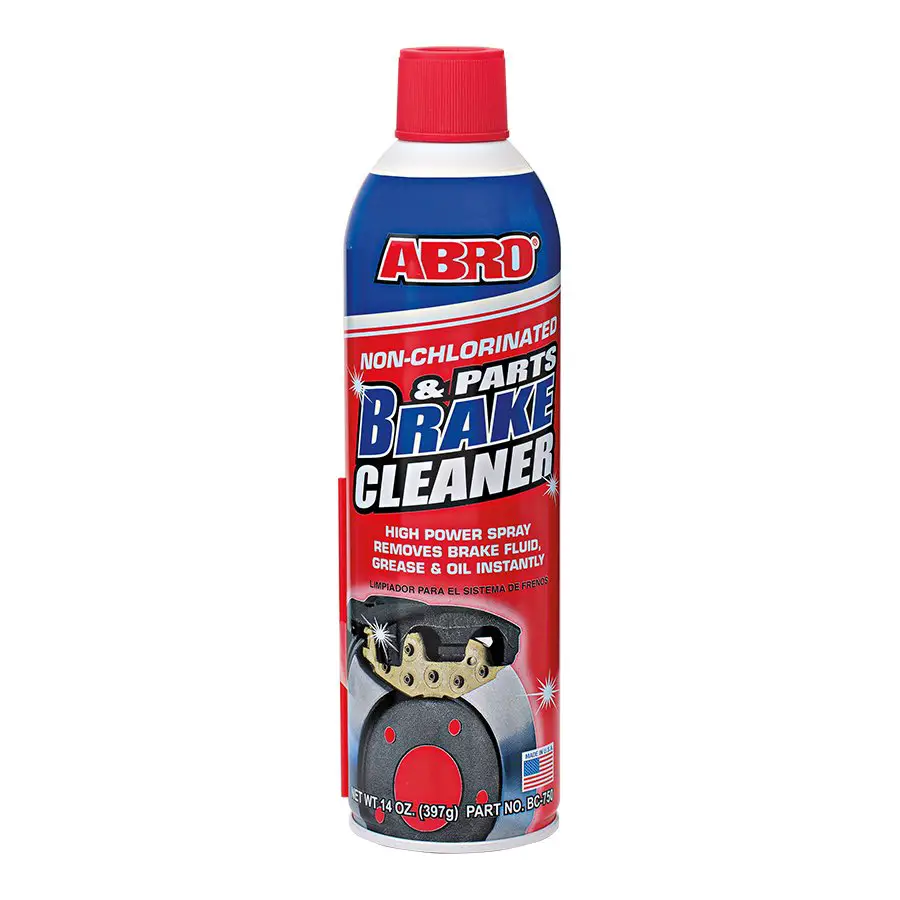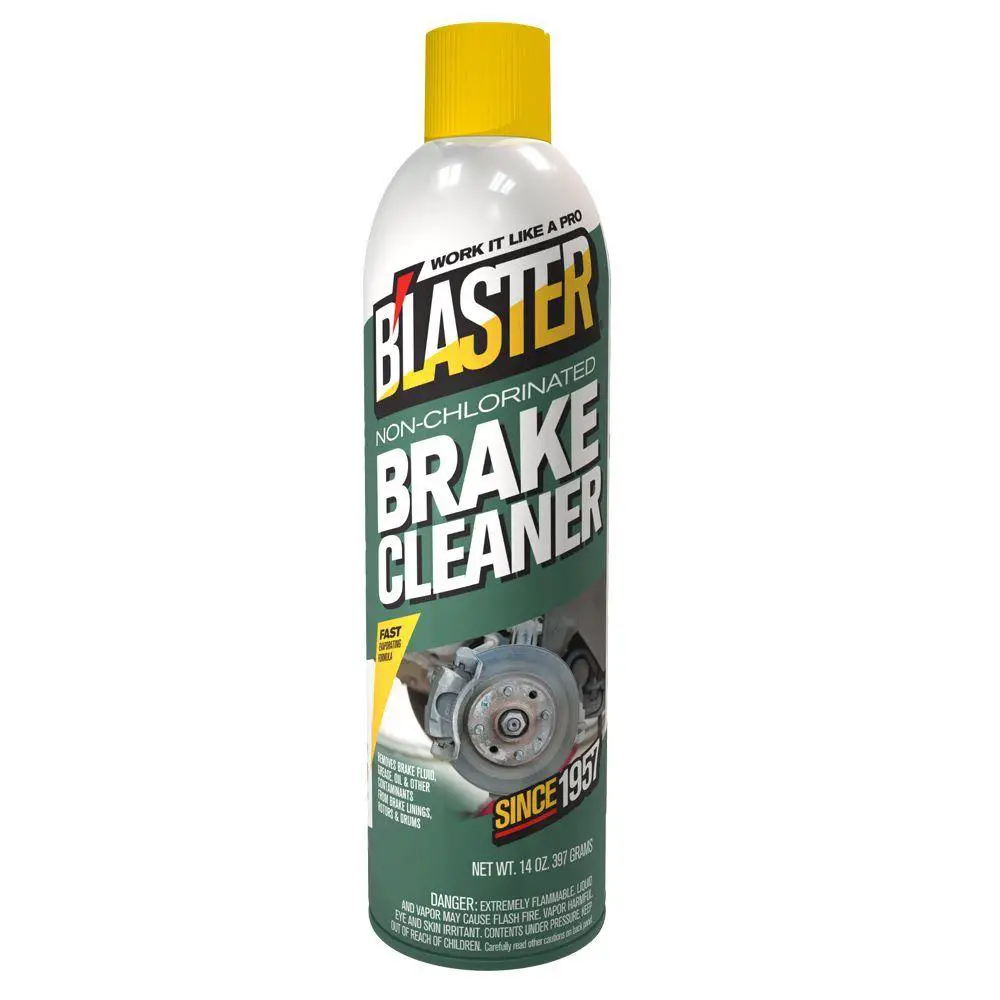Do brake cleaner mess up plastic parts that cover electronics? Yes, brake cleaner can damage plastic parts, causing discoloration and brittleness, which may harm electronics beneath.
Brake cleaner is commonly used in automotive maintenance to clean grease, oils, and other contaminants from metal parts. However, as much as it’s an effective tool for cleaning, it’s essential to consider its impact on other materials, especially plastics that cover sensitive electronic components. The question often arises: Does brake cleaner mess up plastic parts that cover electronics?
In this article, we’ll explain the chemical composition of brake cleaners, their effect on plastics, and how to safely use these cleaners without causing damage to the vehicle’s electronics.

Contents
- 1 What Is Brake Cleaner?
- 2 How Brake Cleaner Affects Plastic Parts Covering Electronics
- 3 The Role of Brake Cleaner’s Solvent Properties
- 4 Best Practices for Using Brake Cleaner Around Plastic and Electronics
- 5 Alternatives to Brake Cleaner for Cleaning Plastic Parts Around Electronics
- 6 Frequently Asked Questions
- 7 Conclusion
What Is Brake Cleaner?
Brake cleaner is a solvent-based product designed to clean automotive components, particularly those in the braking system, such as calipers, pads, rotors, and drums. It works by dissolving grease, brake fluid, oils, and other contaminants that can impair the performance of the vehicle’s braking system.
There are two main types of brake cleaner:
- Chlorinated Brake Cleaners: These contain solvents like perchloroethylene (PERC) and methylene chloride, which are very effective at breaking down contaminants. However, these chemicals are hazardous to both the environment and human health.
- Non-Chlorinated Brake Cleaners: These use solvents like acetone, heptane, or toluene and are generally considered safer for the environment, but they are still highly flammable and can cause skin and eye irritation.
Both types of Chlorinated and Non-Chlorinated Brake Cleaner evaporate quickly, which is one of the reasons they are so useful for cleaning metal parts. However, the same qualities that make brake cleaners effective on metals can be problematic when used near plastics and electronics.
How Brake Cleaner Affects Plastic Parts Covering Electronics
Plastic components are commonly used in vehicles to house and protect delicate electronic parts such as circuit boards, sensors, and connectors. These plastic parts are generally designed to provide insulation and durability, but not all plastics can withstand exposure to harsh chemicals like brake cleaner. Here’s how brake cleaner interacts with plastic:
1. Discoloration of Plastics
Brake cleaner, particularly chlorinated brake cleaners, can cause discoloration of plastic parts. The solvents break down the plastic surface, leading to a yellowing or cloudiness. While this may not necessarily compromise the plastic’s structural integrity, it can significantly affect the aesthetics, especially on parts that are visible in the engine bay or interior of the vehicle.
2. Brittleness and Cracking
Plastic parts exposed to brake cleaner over time can become brittle. Brake cleaner’s chemicals can weaken the molecular structure of the plastic, leading to cracking, flaking, or breaking of the material. This brittleness is particularly concerning for plastic parts that cover sensitive electronic components, as even small impacts or vibrations could cause the plastic to crack and expose the electronics.
3. Deformation or Softening of Plastics
Another common effect of brake cleaner on plastic is softening or deformation. Certain plastic materials may absorb the solvents in brake cleaner, causing them to lose their shape. This can lead to warping, especially in parts that require a precise fit or seal to protect the electronics within.
4. Damage to Electronic Components
One of the most significant risks of using brake cleaner near plastic parts that cover electronics is the potential for the cleaner to seep into the electronics. When brake cleaner comes into contact with electronic components such as circuit boards, sensors, or connectors, it can cause short circuits or corrosion, damaging the functionality of the electronics. Even small amounts of solvent can cause irreversible damage, leading to expensive repairs or replacements.

The Role of Brake Cleaner’s Solvent Properties
Brake cleaner works because of its solvent properties, which allow it to dissolve grease, oils, and dirt. However, these same solvents are harsh and can damage materials such as plastic, rubber, and some metals. The key problem with using brake cleaner on plastic parts near electronics is that many of the solvents used in brake cleaners—especially chlorinated types—are not designed for plastics and can cause reactions that weaken the material.
Solvents like acetone, for instance, are known to dissolve certain types of plastics and resins. Brake cleaners containing acetone or other strong solvents can weaken the bonds in plastic materials, making them more susceptible to damage under stress.
Best Practices for Using Brake Cleaner Around Plastic and Electronics
While brake cleaner is effective for its intended purposes, it’s important to use caution when applying it near plastic parts that cover electronics. Here are some recommended best practices to minimize the risk of damage:
1. Avoid Direct Application
Do not spray brake cleaner directly onto plastic components, especially if those plastics are covering sensitive electronic parts. Even a small amount of brake cleaner can seep into cracks or seams and cause damage to the underlying electronics.
2. Use Protective Barriers
When cleaning around plastic parts that cover electronics, use protective barriers such as plastic sheeting, tape, or a cloth to shield the plastic from the cleaner. This will help prevent brake cleaner from coming into contact with sensitive areas.
3. Opt for Specialized Cleaners
If you need to clean plastic components near electronics, consider using cleaners that are specifically formulated for electronic components or plastic surfaces. Isopropyl alcohol (preferably 90% or higher) is an excellent alternative that evaporates quickly and doesn’t leave residues, making it safe for cleaning electronic parts and plastics.
4. Test on Small Areas
Before using any cleaning product on plastic parts or electronics, it’s a good idea to test it on a small, inconspicuous area first. This will help you determine if the cleaner causes any adverse effects like discoloration or softening before applying it to larger surfaces.
5. Consult Manufacturer Guidelines
Always refer to the manufacturer’s guidelines when cleaning plastic parts or electronics. If you are uncertain about which cleaning products are safe to use, check the vehicle or component manual for recommended cleaning solutions.
Alternatives to Brake Cleaner for Cleaning Plastic Parts Around Electronics
If you need to clean plastic parts that cover electronics, consider using the following alternatives:
- Isopropyl Alcohol (IPA): Isopropyl alcohol is one of the safest and most effective cleaners for electronics and plastics. It evaporates quickly and leaves no residue, making it ideal for cleaning sensitive parts without causing damage.
- Electronic Contact Cleaner: These cleaners are specifically formulated to clean electrical components without causing harm to plastics or circuits. They are available in spray form and are safe for use around delicate electronics.
- Diatomaceous Earth or Dry Brushes: For light cleaning, a soft brush or even diatomaceous earth (a non-toxic powder) can be used to clean off dust or debris without causing harm to plastic parts.
- Plastic-Safe Degreasers: If you need something stronger than isopropyl alcohol, opt for degreasers that are specifically designed for plastic components. These are generally safer than brake cleaner for use around sensitive materials.
Frequently Asked Questions
Here are some FAQs about brake cleaner mess up plastic parts that cover electronics –
1. Can brake cleaner be used on plastic parts near electronics?
No, brake cleaner can damage plastic parts and electronics due to its harsh solvents.
2. What should I use to clean plastic components that cover electronics?
Use isopropyl alcohol or an electronic contact cleaner, which are safer for plastic and electronics.
3. Does brake cleaner affect all types of plastic?
Brake cleaner can damage most plastics, especially softer plastics or those exposed to harsh chemicals.
4. What can happen if brake cleaner gets on electronics?
Brake cleaner can cause short circuits, corrosion, and permanent damage to electronic components.
5. Are there safer alternatives for cleaning plastic parts near electronics?
Yes, alternatives like isopropyl alcohol or specialized plastic-safe degreasers are much safer for cleaning around electronics.
Conclusion
In conclusion, while brake cleaner is an effective tool for cleaning metal parts, it can cause significant damage to plastic components that cover electronics. The solvents in brake cleaner can lead to discoloration, brittleness, and deformation of plastics, and potentially damage the underlying electronic components.
It’s important to follow best practices to avoid exposing plastic parts and electronics to these harsh chemicals. By using specialized cleaners designed for electronics and plastic, you can safely clean your vehicle without compromising the integrity of sensitive components.